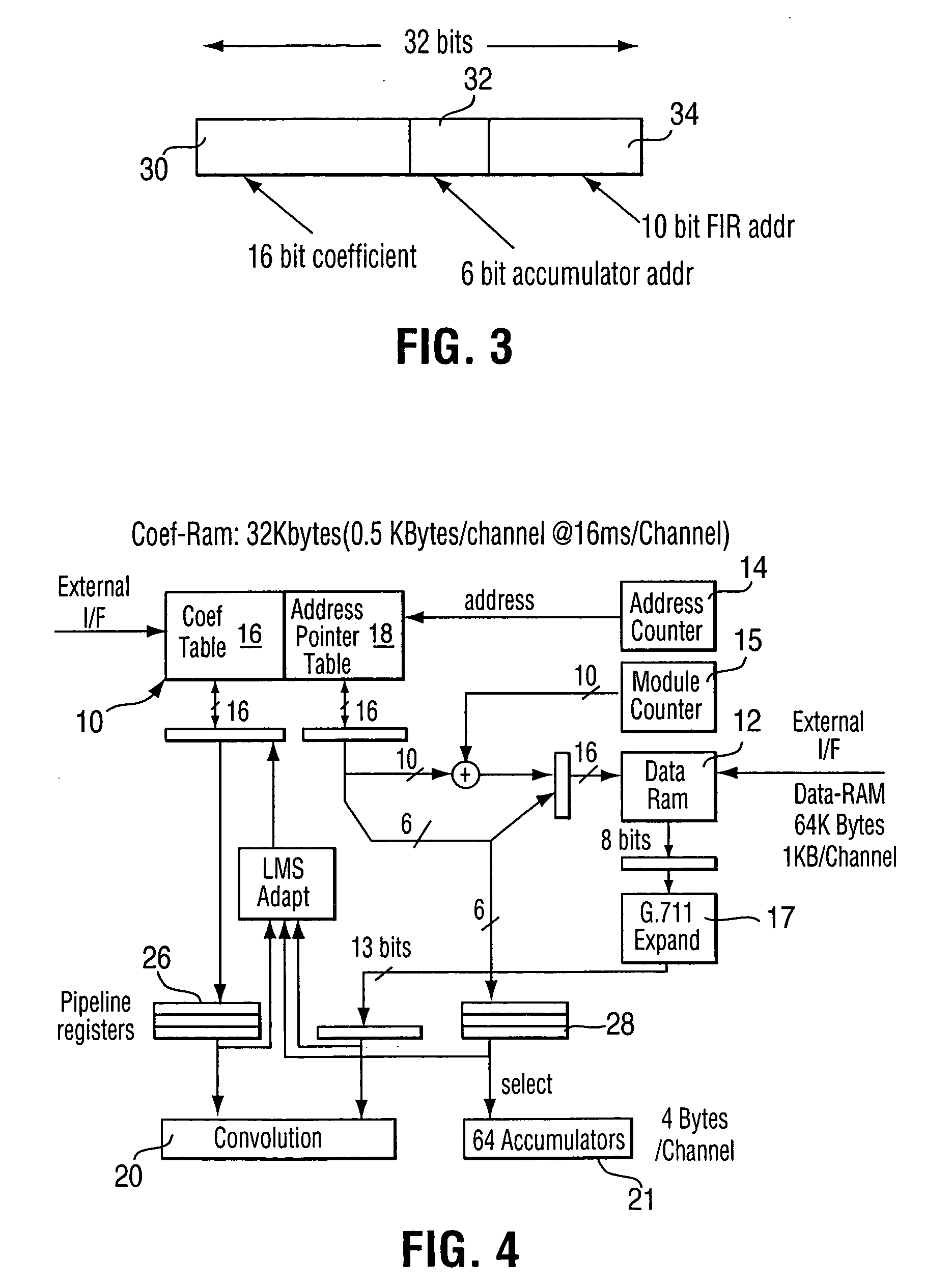Reduced complexity adaptive filter
a filter and complexity technology, applied in the field of adaptive filters, can solve the problem of more coefficients required to model the system, and achieve the effect of reducing the amount of storage memory for filter coefficients and the overall number of coefficients processed
- Summary
- Abstract
- Description
- Claims
- Application Information
AI Technical Summary
Benefits of technology
Problems solved by technology
Method used
Image
Examples
Embodiment Construction
[0019] The principle of processing only non-zero taps with a FIR filter will first be reviewed. It is well known that in telecom (voice telephony) networks, the required echo tail capacity is a maximum of about 128 ms, although it is possible to find cases larger that this. The term “echo tail” refers to the impulse response of the echo path. Typically, this echo tail consists of large network delays represented by zero valued samples of the impulse response, and one or more short echo transfer functions caused by hybrid circuits in the network. The typical length of a hybrid echo response is usually about 5 ms. If an echo canceller provides an echo tail capacity of 128 ms, then usually, most of the filter coefficients that model the echo will ideally be zero valued. Some channels will need much more than 5 ms of non-zero valued coefficients, and these instances are statistically rare, yet still important to handle adequately. When a single DSP or ASIC device must implement hundreds...
PUM
 Login to View More
Login to View More Abstract
Description
Claims
Application Information
 Login to View More
Login to View More - R&D
- Intellectual Property
- Life Sciences
- Materials
- Tech Scout
- Unparalleled Data Quality
- Higher Quality Content
- 60% Fewer Hallucinations
Browse by: Latest US Patents, China's latest patents, Technical Efficacy Thesaurus, Application Domain, Technology Topic, Popular Technical Reports.
© 2025 PatSnap. All rights reserved.Legal|Privacy policy|Modern Slavery Act Transparency Statement|Sitemap|About US| Contact US: help@patsnap.com



